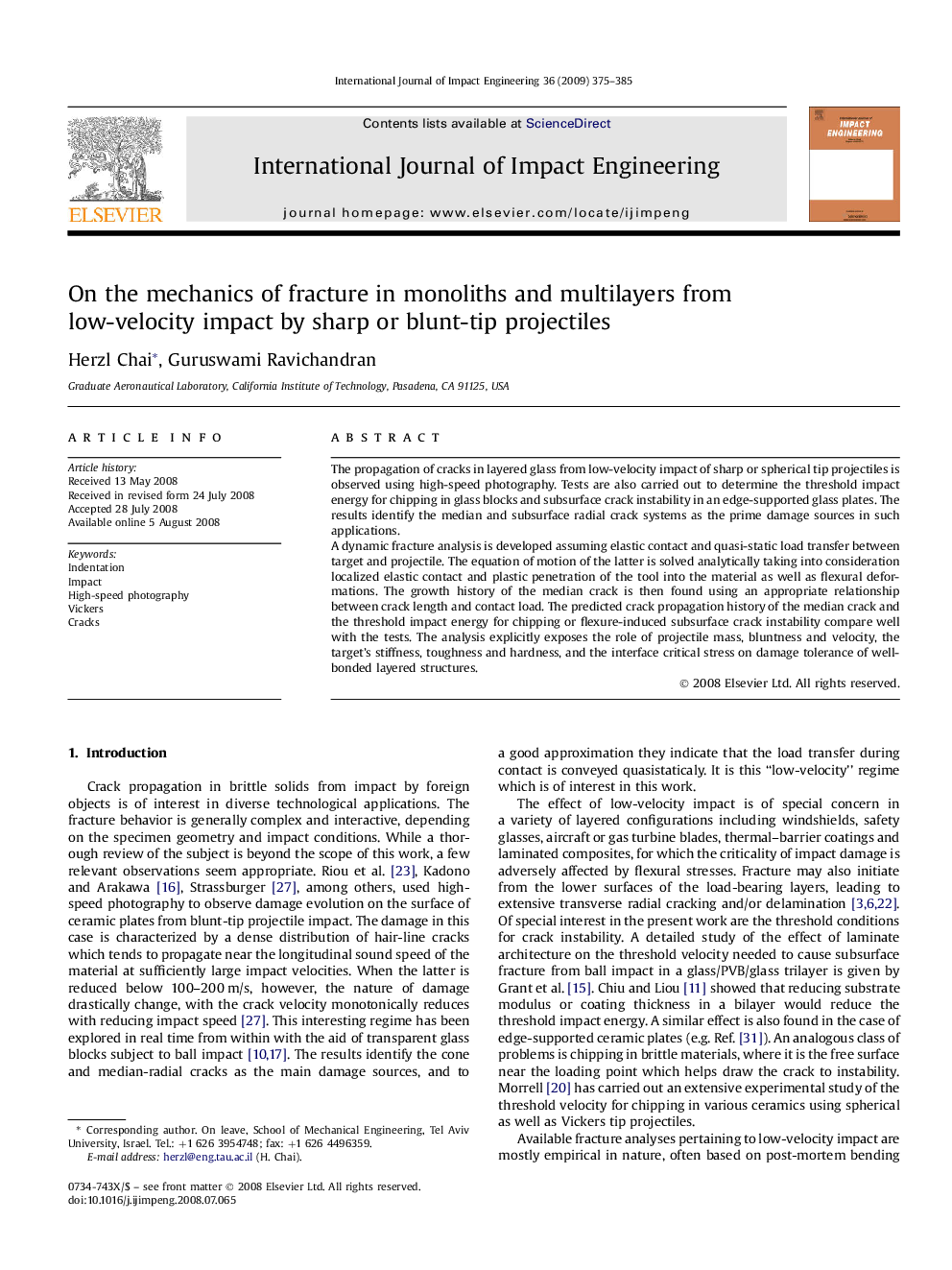| Article ID | Journal | Published Year | Pages | File Type |
|---|---|---|---|---|
| 779415 | International Journal of Impact Engineering | 2009 | 11 Pages |
The propagation of cracks in layered glass from low-velocity impact of sharp or spherical tip projectiles is observed using high-speed photography. Tests are also carried out to determine the threshold impact energy for chipping in glass blocks and subsurface crack instability in an edge-supported glass plates. The results identify the median and subsurface radial crack systems as the prime damage sources in such applications.A dynamic fracture analysis is developed assuming elastic contact and quasi-static load transfer between target and projectile. The equation of motion of the latter is solved analytically taking into consideration localized elastic contact and plastic penetration of the tool into the material as well as flexural deformations. The growth history of the median crack is then found using an appropriate relationship between crack length and contact load. The predicted crack propagation history of the median crack and the threshold impact energy for chipping or flexure-induced subsurface crack instability compare well with the tests. The analysis explicitly exposes the role of projectile mass, bluntness and velocity, the target's stiffness, toughness and hardness, and the interface critical stress on damage tolerance of well-bonded layered structures.
